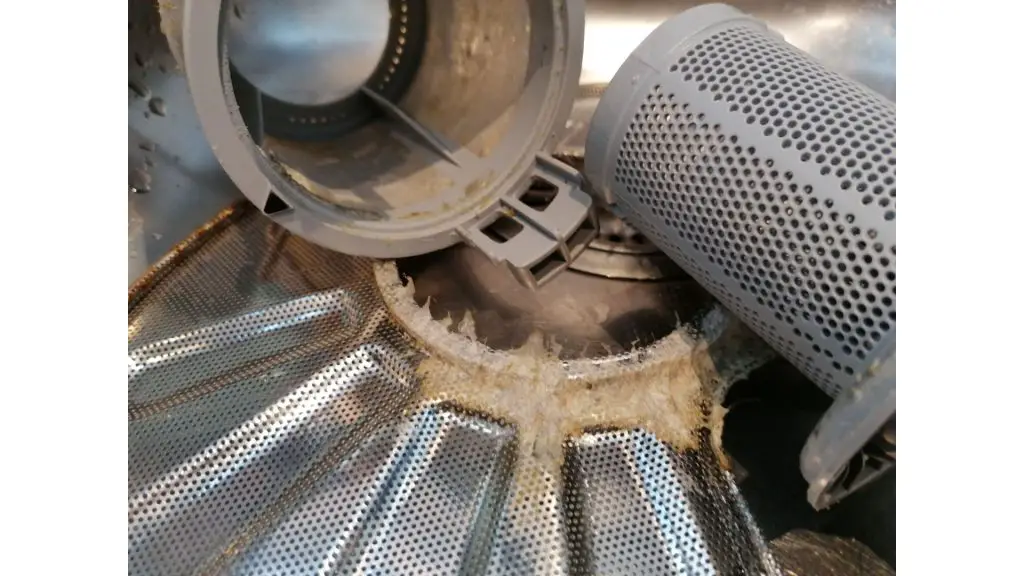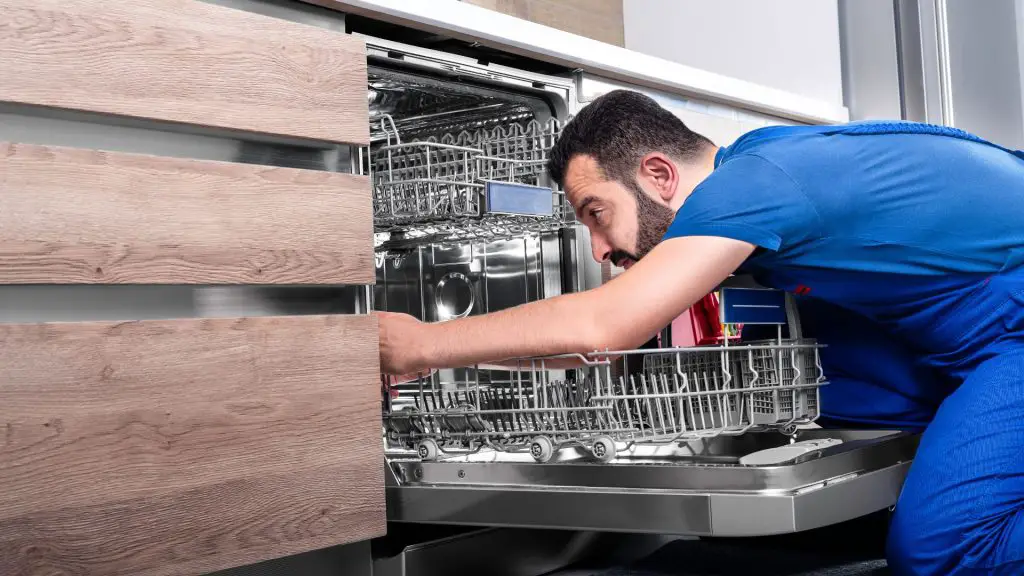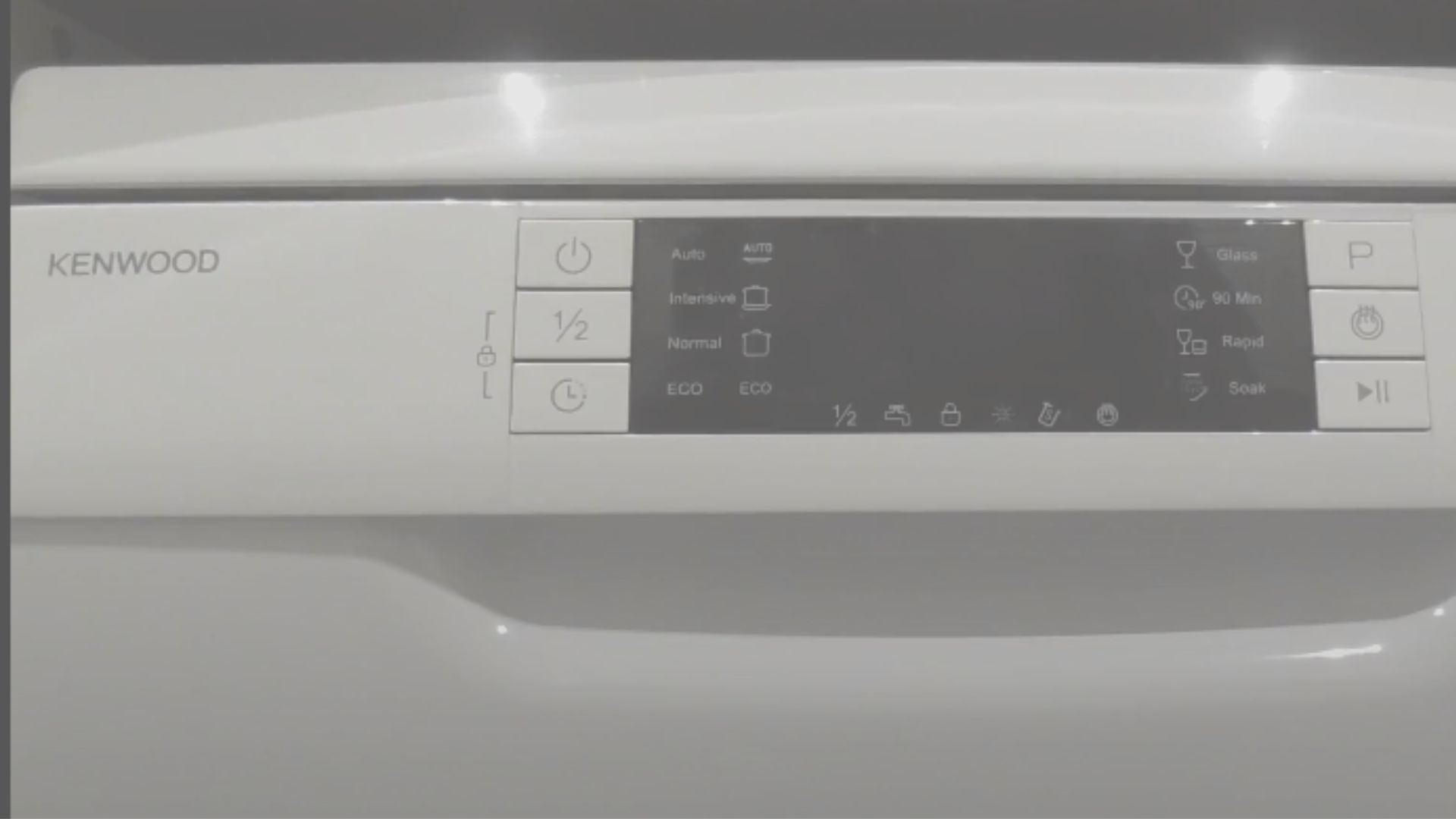You can’t ignore draining issues in your Kenwood dishwasher. The terrible smell will let you know that things have gone wrong. If you left your dishes in the appliance overnight, you should take them out and wash them by hand before troubleshooting the dishwasher. More than likely, you will find that one or more of the following is at fault:

1). The filter catches dirt and debris. If you forget to clean it, that debris will accumulate until it blocks the filter, preventing the water from passing.
2). If the filter looks clean, or if you cleaned the filter, but the clogging has persisted, check the sump. Food can accumulate in the sump.
3). The drain hose does just that. It drains dirty water out of the dishwasher. In other words, a blockage in the drain hose will prevent the water from draining.
4). The filters and hoses are the first components consumers check because they expect these parts to clog. They ignore the valve bracket because they are completely unaware of its existence.
The valve bracket is the reason why drained water doesn’t flow back into the dishwasher. Does your valve move freely? Test the device by pushing on it. The valve can freeze because of a burnt-out solenoid.
5). Do you know where the dirty water goes when it leaves the dishwasher? It doesn’t disappear. The hose takes the dirty water out of the kitchen through a pipe. On its own, food is unlikely to block the waste pipe.
However, it leaves grease and fat that solidifies and accumulates over time, creating a severe blockage. Some blockages are so serious that homeowners damage the pipe while trying to remove them, making a bad situation even worse.
6). Some people think the drain and control board are unrelated. They don’t understand that the control board runs every component in the Kenwood dishwasher, including the drain pump. Sometimes, a dishwasher fails to drain because you activated a delay start program.
In other cases, the drain pump will malfunction because it doesn’t have an adequate power supply. This can happen because the control board has a fault. The water won’t drain until you fix the control board.
7). Don’t be so quick to replace the drain pump. Some consumers blame draining issues on defective pumps. They don’t realize that drain pumps can clog, and eliminating those obstructions can fix the problem.
Don’t waste money on potentially expensive repairs and replacements without first checking the drain pump for obstructions. A multimeter will give you confirmation. Use it to test the pump motor for continuity.
Homeowners hate finding defective pumps in their Kenwood dishwashers. According to the repair clinic, you can’t fix a broken drain pump. The only option is to replace it.
8). Is the drain impeller broken? This device pushes water through the drain hose. Therefore, the water may refuse to drain or drain slowly because the impeller broke.
9). Who installed the garbage disposal? If you performed this task yourself, did you remove the drain plug?
Garbage disposals come with a drain plug. You only remove it when you connect the garbage disposal to the dishwasher. But some people forget. If you removed the plug, check the garbage disposal for obstructions. The dishwasher is not the only appliance that clogs.
10). If you installed the dishwasher yourself, you probably made a mistake. For instance, some people make the drain hose too long or too high. The pump doesn’t have the strength to push the dirty water through a long or high hose.
Or maybe you bent, kinked, or damaged the hose at some point. You should check all the connections. Make sure the water has a clear path out of the dishwasher.
11). The control board and drain pump manage the dishwasher’s drainage system. These are electronic components. They won’t work if the appliance has frayed or worn-out wiring. Wires can wear out because of mishandling, overheating, mechanical stress, poor maintenance, and aging.
How To Fix Kenwood Dishwasher That Is Not Draining?

Kenwood dishwashers that won’t drain are annoying because the dishwasher won’t work until you solve this problem. Fortunately, you have several solutions at your disposal, including:
1). Remove the Water
Tip the dishwasher back 45 degrees to drain the water. Naturally, this won’t solve the problem. However, you can’t troubleshoot the dishwasher without removing the water.
Don’t forget to cover the floor with towels, newspapers, and basically anything that absorbs water. You can also scoop the water out with a cup or ladle. Once it’s shallow enough, suck up the remaining water with a cloth.
2). Run the Garbage Disposal
Run the garbage disposal for thirty minutes to resolve mild clogging in the garbage disposal or air gap. This doesn’t always work. But the procedure is worth trying.
3). Add Baking Soda and Vinegar
The experts at Home Matters have made a unique but effective suggestion. They want you to pour a baking soda/ vinegar mixture into the standing water. In other words, you don’t have to drain it beforehand.
Wait twenty minutes and check the dishwasher again. The water may actually drain. If this happens, rinse the dishwasher with hot water before running a rinse cycle to loosen and eliminate obstructions.
4). Clean the Filter
Use the manual to identify the location of your Kenwood dishwasher’s filter. Use warm, soapy water to scrub it. But don’t re-install it just yet. Get a pair of gloves and reach into the sump. You may know it as the drain. This is the hole beneath the filter. Manually remove any obstructions you come across.
5). Activate the Drain Function
Reset the appliance by depriving it of power for a few minutes. The family handyman expects a reset to activate the drain mechanism. You can also press and hold the cancel or start button for three seconds to get the drain motor spinning.
If you check your manual, it will tell you how to perform a reset. The procedure tends to vary with each model.
6). Clean the Air Gap
Blockages are not restricted to the hose, filter, and drain. The air gap is the small cylinder next to the sink faucet. Remove the air cover and use tweezers and a toothbrush to eliminate any obstructions you see.
You should also clean the air gap tube. Get a wire coat hanger and push it into the tube. Move it up and down while the dishwasher’s drain function runs. The hanger will break up solid obstructions, allowing them to drain from the appliance.
7). Clean the Drain Hose
Get on your knees and check the hose for obstructions. Put the tube’s opening in a bucket and shake it while running the drain. If the clog is too deep for you to reach, replace the hose. Do the same for tubes with kinks.
You can straighten the hose, but the kinks will appear again. You can consult a technician for additional options, but replacing the hose is best.
8). Replace the Pump
Remove foreign objects to fix a blocked pump. If a continuity test proves that your pump is dead, replace it. Do the same for faulty valves, motors, burned-out solenoids, frayed wires, and impellers.
9). Replace the Control Board
A hard reset will eliminate electronic glitches responsible for the Kenwood dishwasher’s drainage problems. But if they persist, replace the defective control board. Again, a technician may offer additional options, such as potentially fixing the board. But you’re better off replacing it.
10). Clean the Waste Pipe
Remove the obstructions in the waste pipe. This problem may require a plumber’s assistance, especially if the grease and fat have refused to budge.

